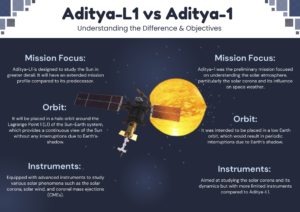Roadmap for Answer Writing Introduction Definition of Asteroids: Define asteroids as rocky, airless remnants from the early solar system, dating back approximately 4.6 billion years. State their primary location in the asteroid belt between Mars and Jupiter. About Asteroids Composition and Classification: Discuss the variety in size ...
Model Answer Introduction India has achieved remarkable success in unmanned space missions, exemplified by the Mars Orbiter Mission (MOM) and Chandrayaan. However, the country has yet to embark on a manned space mission. The primary obstacles to launching such missions are multifaceted, encompassingRead more
Model Answer
Introduction
India has achieved remarkable success in unmanned space missions, exemplified by the Mars Orbiter Mission (MOM) and Chandrayaan. However, the country has yet to embark on a manned space mission. The primary obstacles to launching such missions are multifaceted, encompassing both technological and logistical challenges.
Technological Challenges
- Advanced Technology Requirements:
Manned missions demand sophisticated technology beyond what is needed for unmanned missions. For instance, developing a safe and reliable crew module capable of supporting human life in space is a complex task that involves extensive research and development. - Launch and Recovery Systems:
Reliable launch systems are crucial for crew safety, including mechanisms to abort missions if necessary. Additionally, effective recovery systems must ensure astronauts return to Earth safely, as the return journey can often be more perilous than the launch. - Life Support Systems:
Sustaining human life in space poses significant challenges, such as managing zero gravity, radiation exposure, and temperature fluctuations. Robust life support systems are essential to provide oxygen, food, waste management, and address psychological factors affecting the crew. - Astronaut Training:
Comprehensive astronaut training is vital. This includes mastering piloting skills, managing emergencies, and coping with extended periods in confined spaces.
Logistical and Financial Aspects
- High Costs:
Manned missions are substantially more expensive than unmanned ones, necessitating significant financial investments. India has allocated Rs. 10,000 crore for the Gaganyaan mission, reflecting its financial commitment (Source: Government of India). - Infrastructure Development:
Establishing the necessary infrastructure for manned missions involves extensive logistical planning. This includes creating facilities for training, mission control, and vehicle assembly.
India’s Futuristic Approach
The Gaganyaan mission aims to send a three-member crew to space, marking a pivotal step in India’s manned space exploration. The Indian Space Research Organisation (ISRO) is enhancing technology through the development of a heavy-lift launch vehicle and safety systems. Moreover, efforts to encourage private sector participation through IN-SPACe are expected to strengthen the space ecosystem.
Conclusion
Despite the significant challenges, India is making substantial progress towards its first manned mission, Gaganyaan, which could herald a new era in the country’s space exploration capabilities.
See less


Model Answer Introduction Asteroids are rocky, airless remnants from the early formation of our solar system, dating back approximately 4.6 billion years. They primarily orbit the Sun in the asteroid belt between Mars and Jupiter and vary widely in size and composition, containing rock, metals, andRead more
Model Answer
Introduction
Asteroids are rocky, airless remnants from the early formation of our solar system, dating back approximately 4.6 billion years. They primarily orbit the Sun in the asteroid belt between Mars and Jupiter and vary widely in size and composition, containing rock, metals, and other elements. Asteroids are categorized into types such as C-type (carbonaceous), S-type (silicaceous), and M-type (metal-rich).
Threat of Asteroids Causing Extinction of Life
The threat posed by asteroids is significant, particularly due to historical events. For instance, a massive asteroid impact is believed to have caused the extinction of the dinosaurs around 66 million years ago, with the Chicxulub crater in Mexico marking the impact site. Such large asteroids, typically over 1 km in diameter, could lead to global catastrophes, including severe climate disruption and ecosystem collapse. Although the probability of a significant impact is low, the potential consequences warrant concern. NASA’s Planetary Defense Coordination Office emphasizes the severe global effects that could result from a large impact.
Strategies to Prevent Catastrophe
To mitigate the risks associated with asteroids, several strategies have been developed:
Conclusion
While the likelihood of a life-extinguishing asteroid impact is low, the severe consequences of such an event necessitate ongoing vigilance and preparedness through continuous monitoring, international collaboration, and technological advancements.
See less